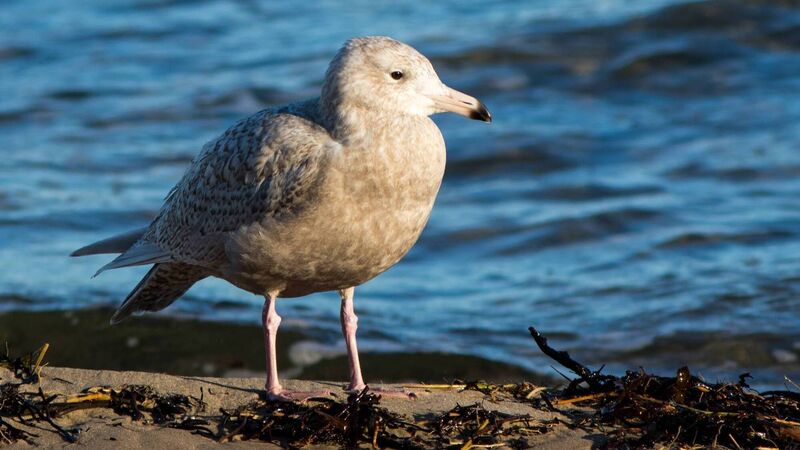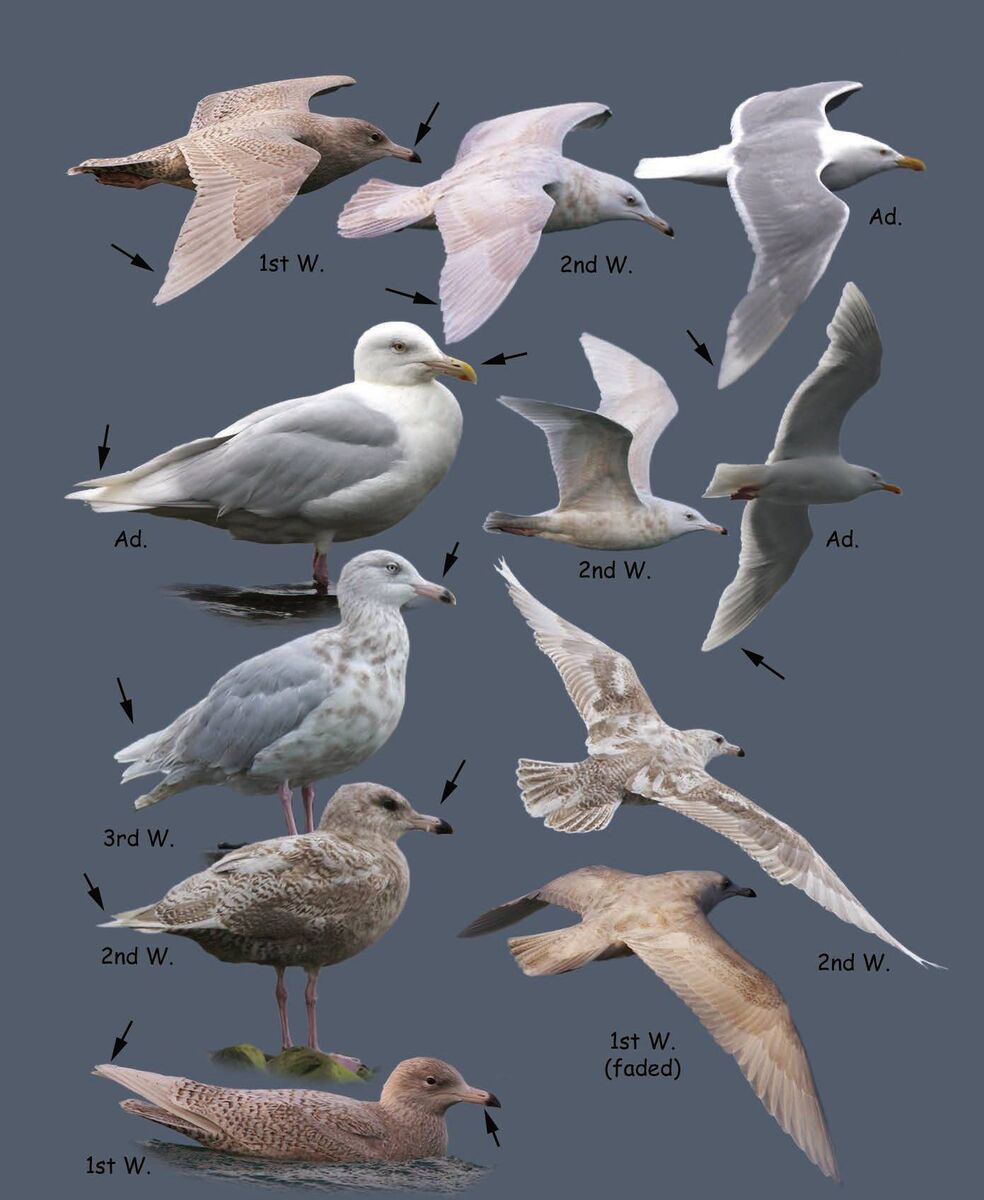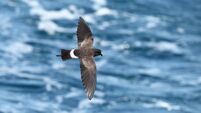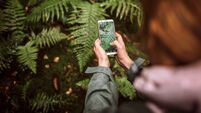Birds of Ireland: Glaucous Gull

Glaucous Gull (Larus hyperboreus) — typically seen at estuaries and at the coast here
A glaucous gull is about 63–67cm long with a wingspan of 154–158cm
They are a non-breeding species found here in the Autumn, Winter and Spring — on estuaries and at the coast.
A glaucous gull is about the size of a black-backed gull. They are of a heavy build and have no black on their wing tips.
The adults have white wing tips. Glaucous gulls in their non breeding plumage can appear to be heavily streaked brown on head/neck//breast; stout yellow beak with red spot; pink legs. Their wings typically project just beyond their tail.

Juvenile and immature glaucous gulls start off brown on their body; their wings are finely marked/and their wing tips are pale; gradually changing to adult plumage over four years. They can look almost all white in their second and third year. And their beak has a pink base with a black tip.
In flight: pale wing tips are visible on young birds; overall they appear as a pale gull in and as they near adult plumage. From below, paler primaries/secondaries stand out against rest of their underwing.
[Glaucous (from Latin glaucus meaning 'blue-green, blue-grey') is used to describe the pale grey or bluish-green appearance of the surfaces of some plants, as well as in the names of birds.]
If you are intending to enter your bird photos in competitions, where images may be scrutinised under a microscope, an increasingly popular and relatively inexpensive option is what is known as 'phonescoping' or 'digiscoping'. This involves using a telescope and putting a phone camera or digital camera up to the eyepiece to take a photo through the telescope.
There are many articles on the subject on the internet, and with the right combination of telescope and phone/camera you can get some amazing photographs without having to drag a camera and big lens as well as your telescope and binoculars around with you. You can even try using your phone camera or digital camera with your binoculars.

- Jim Wilson is a wildlife writer, broadcaster, tour leader, and former chairman of BirdWatch Ireland. He has been involved in the study and conservation of birds in Ireland for more than 45 years, contributing to several major surveys and international projects.
- Mark Carmody is an award-winning wildlife photographer, has a PhD in biochemistry and works as a European patent attorney.










